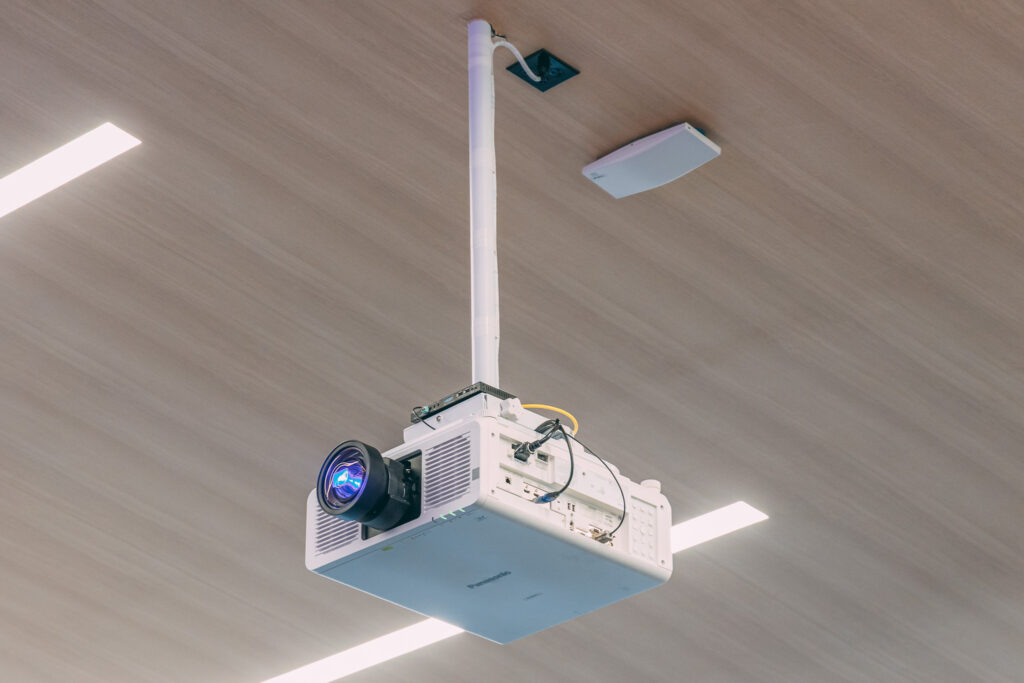In today’s digital age, effective communication between local governments and the public is more important than ever. Whether it’s city council meetings, public safety announcements, or emergency response coordination, municipalities need tools that ensure messages are delivered clearly, promptly, and accessibly. Audio-video (AV) technology is playing a pivotal role in modernizing and streamlining these communication efforts, helping to build trust, transparency, and community engagement. Municipalities use Audio-Video technology to foster transparency, increase engagement, and better serve their citizens.
Why AV Technology Matters for Municipalities
Local governments operate in fast-paced environments, managing everything from public works to police departments, zoning hearings, and community events. Clear, efficient communication is the backbone of good governance, but traditional methods like newsletters, bulletin boards, or word-of-mouth are no longer sufficient on their own.
That’s where AV solutions come in. From broadcast systems in council chambers to public address systems in parks and municipal buildings, these tools help local leaders connect with citizens in real time—whether in person or remotely.
Enhancing Transparency Through Live Streaming and Recording
One of the most impactful ways municipalities use AV is through live streaming and recording of public meetings. With the rise of hybrid and remote access expectations, cities and counties are now leveraging AV systems to broadcast town hall meetings, planning and zoning sessions, and city council discussions directly to the public via social media or dedicated municipal websites.
This capability not only promotes transparency but also improves accessibility. Citizens who can’t attend in person—whether due to work, mobility issues, or health concerns—can still stay informed and engaged with local governance. Recording these sessions also ensures a reliable public record, which can be revisited by citizens, media, or officials when needed.
Emergency Communication and Public Safety
When emergencies arise—be it natural disasters, infrastructure failures, or public health crises—time is of the essence. Municipalities rely on integrated AV systems to deliver alerts and instructions quickly and efficiently. Digital signage, outdoor speakers, and mass notification systems can broadcast information across parks, libraries, recreation centers, and transit stations, helping to keep the public safe.
Some cities have even invested in mobile command centers equipped with AV capabilities to coordinate responses in the field. These high-tech hubs ensure that police, fire, and emergency medical teams can operate in sync with city administrators, sharing real-time video feeds and data.
Community Engagement and Events
AV isn’t just for formal meetings or emergencies—it’s also a key ingredient in fostering a strong sense of community. City-hosted movie nights, festivals, concerts, and public workshops all benefit from reliable AV systems. High-quality sound systems, video projection, LED walls, and stage lighting enhance the experience for attendees and help municipalities project a modern, professional image.
AV technology can also play a role in inclusive communication. Multilingual captioning, assisted listening devices, and visual aids help ensure that all residents—regardless of age, ability, or language—can fully participate in civic life.
Future-Proofing Municipal Operations
As AV technology continues to evolve, municipalities must look toward scalable and adaptable solutions. Cloud-based control systems, touchless interfaces, and integrated collaboration platforms (such as Microsoft Teams or Zoom Rooms) are becoming the norm in many government offices and meeting spaces. These investments not only improve current communication efforts but also position cities to be more resilient and connected in the years ahead.
Partnering with AV Professionals
Every municipality has unique needs, depending on its size, geography, and population. Working with an experienced AV integrator ensures that the right technology is installed, configured, and supported long-term. From system design to maintenance, a knowledgeable partner can help municipalities get the most out of their investment while staying within budget and meeting compliance standards.
Conclusion
In an era where information moves quickly and public expectations are high, municipalities must prioritize clear and consistent communication. By embracing modern audio-video solutions, local governments can foster transparency, increase engagement, and better serve their citizens—now and in the future.
